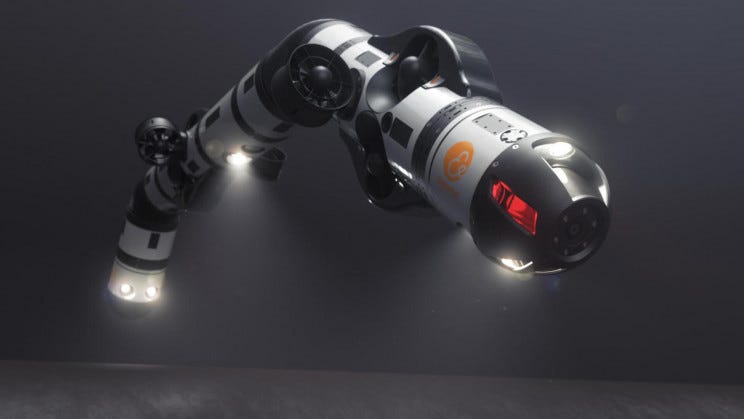Despite massive investment in research, Malaria has long been one of the most difficult diseases to eradicate. This week we look at a potential new Malaria vaccine based upon saRNA, an outgrowth of the work on mRNA (which is used by some of the Covid vaccines). We also discover a paste that will easily store hydrogen for use in electric vehicles and a new method for dealing with sleep apnea and snoring. Finally we look at a robotic snake that can stay underwater for 6 months at a time.
Malaria Vaccine progress
Malaria is a very difficult disease to develop a vaccine for because the parasite that infects us, Plasmodium, contains a protein that inhibits production of memory T-cells. These T-cells are the mechanism by which the body protects itself against previously encountered pathogens. If the body can’t generate the appropriate T-cells, any vaccine is ineffective.
Most vaccines work by injecting a very small amount of the actual pathogen. This approach does not work with Malaria. Scientists at Yale University have developed a way to get around the PMIF gene that the parasite uses to suppress T-cell response and immune memory. They did this by presenting the body with instructions, via saRNA, on how to create the protein unique to the pathogen in order for the body to fight it.
saRNA or self amplifying RNA is a small double stranded RNA that targets gene promoters to induce gene activation. The advantage of saRNA is that the volume of vaccine required is greatly reduced as it holds the code for the enzyme required to allow the genetic material to be replicated several times by the body. This capability also allows mass production of vaccines more quickly. Therapeutic uses of saRNA being developed include treatments for bladder tumors, liver carcinogenesis and pancreatic cancer.
The vaccine has been tested in animals and human trials will begin shortly. Malaria kills approximately 400,000 people annually. 94% in Africa and mostly children under 5.
Treating Sleep Apnea
Nexense, an Israeli startup has developed a new technology to treat sleep apnea and snoring. These two problems have been found to be a direct cause of exhaustion and fatigue, lack of concentration, memory problems, increased stroke and heart disease risk, chronic headaches, obesity and mental health issues.
Sleep apnea and snoring are a result of restricted breathing during sleep. Nexense have developed SleepX to combat these problems. The system uses a wristband to detect any irregular breathing patterns or snoring. When detected the wristband vibrates gently, at a level not enough to wake the subject, but just enough to transition them into a lighter sleep phase. After repeated use the brain is trained to breath properly.
The sensors have been developed and tested in a variety of industrial settings. Partners include Boeing, Ford and Samsung. The SleepX will begin production shortly. You can sign up for notifications on availability and pricing on their website. Please check with your medical practitioner to see if this device is suitable for your situation before using.
Hydrogen Paste
Hydrogen fuel cells are an alternative to battery operated electric vehicles. To carry the hydrogen, a reinforced tank needs to be installed. That tank must be able to withstand 700 bar pressure (1 bar pressure is the atmospheric pressure at 111 meters above the earth at 15 degrees C). This precludes motor bikes and smaller vehicles from using hydrogen as a fuel.
Scientists at the Fraunhofer Institute for Manufacturing Technology and Advanced Materials in Dresden have developed a hydrogen based paste as an alternative. PowerPaste is made out of magnesium which is combined with hydrogen to form magnesium hydride. The process is conducted at 350 degrees C at 5 to 6 times atmospheric pressure. The finished paste is stored in a cartridge and can be released by a plunger as required. The paste is mixed with water to generate the hydrogen gas required for the vehicle fuel cell.
Refueling is a matter of replacing the cartridge and filling the water tank. The paste has 10 times the energy storage density of batteries. Easily stored and transported it could also be a range extender for battery powered electric vehicles. The paste may be the ideal alternative for rural areas that do not have easy access to hydrogen fueling stations.
Robotic Sea Snake
Eelume is a 6 meter long snake like robot that helps the deep sea oil and gas industry install, maintain and inspect undersea pipelines. The robot uses cameras and sensors for underwater navigation and it can remain in its’ docking station underwater at depths of up to 500 meters for 6 months at a time. It can travel up to 20 kilometers before needing recharging.
The robot has a varied set of tools allowing it to operate on subsea valves and to clean marine growth and sediment. Currently maintenance is carried out by unmanned undersea vehicles however they need to be controlled from a fully crewed ship that must travel to the required site. This can cost up to $100,000 per day. The snake robot can be controlled from an office and mobilized at any time removing the need for costly surface vessels.
Paying it Forward
If you have a start-up or know of a start-up that has a product ready for market please let me know. I would be happy to have a look and feature the startup in this newsletter. Also if any startups need introductions please get in touch and I will help where I can.
If you have any questions or comments please email me via my website craigcarlyon.com or comment below.
I would also appreciate it if you could forward this newsletter to anyone that you think might be interested.
Till next week.





